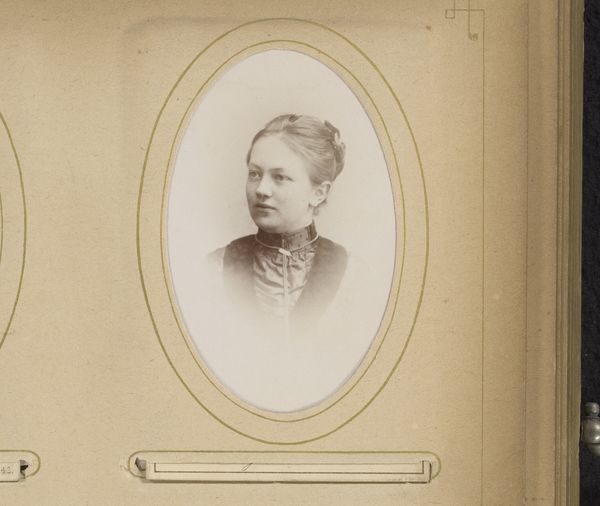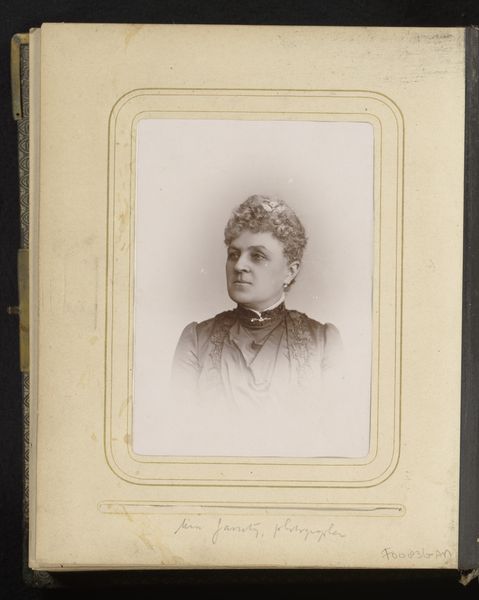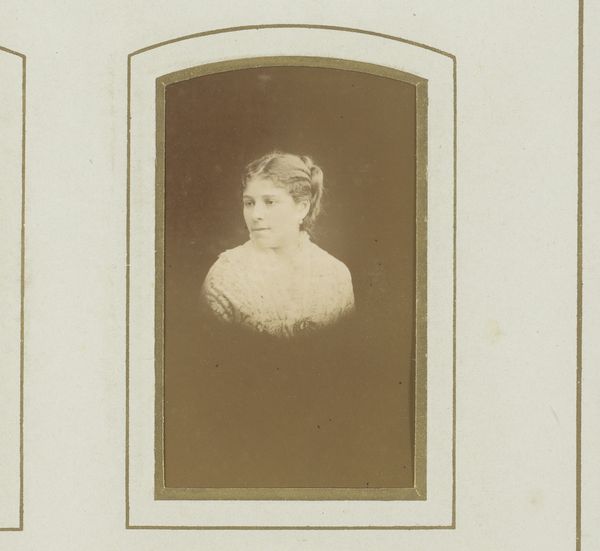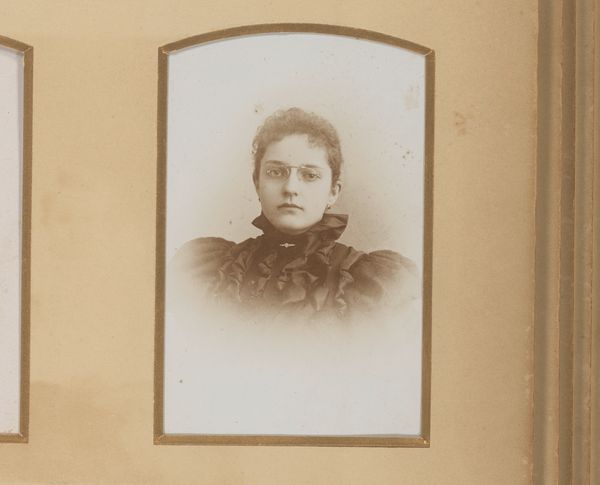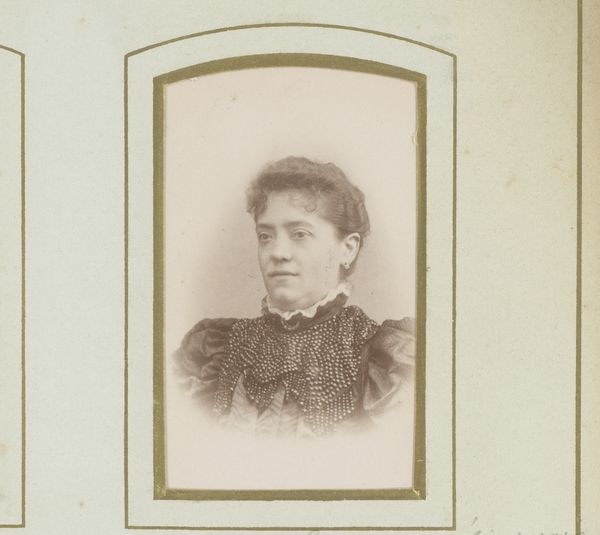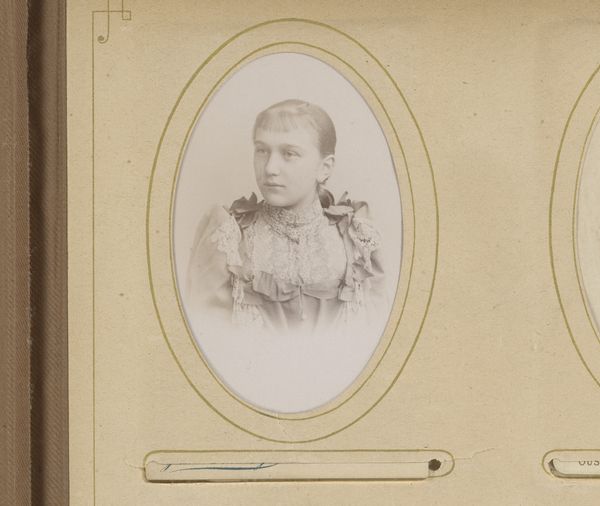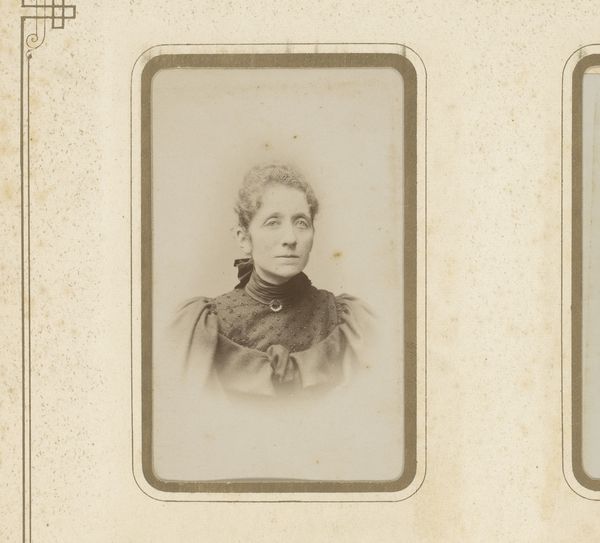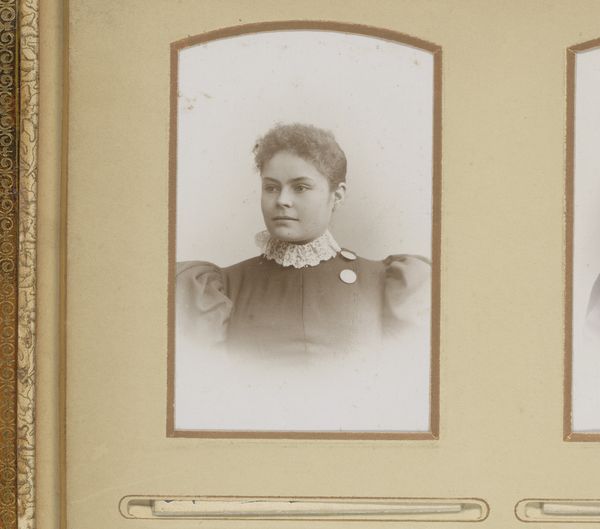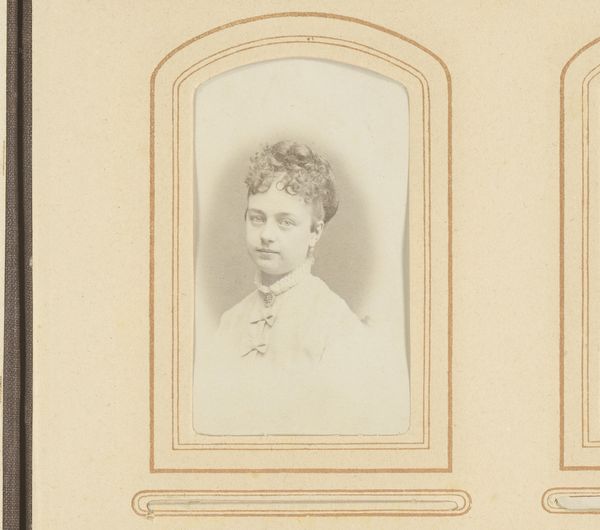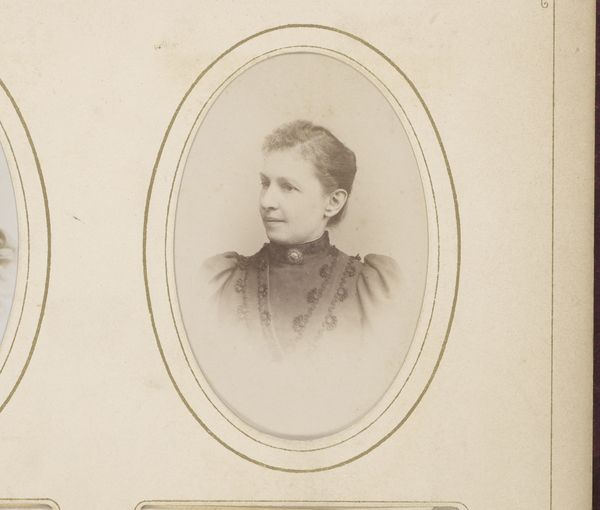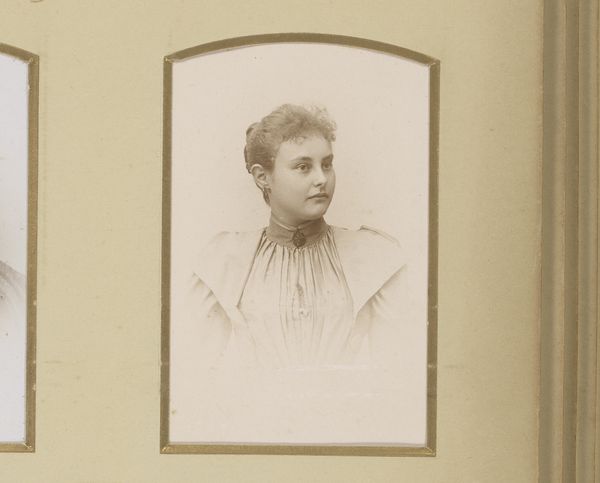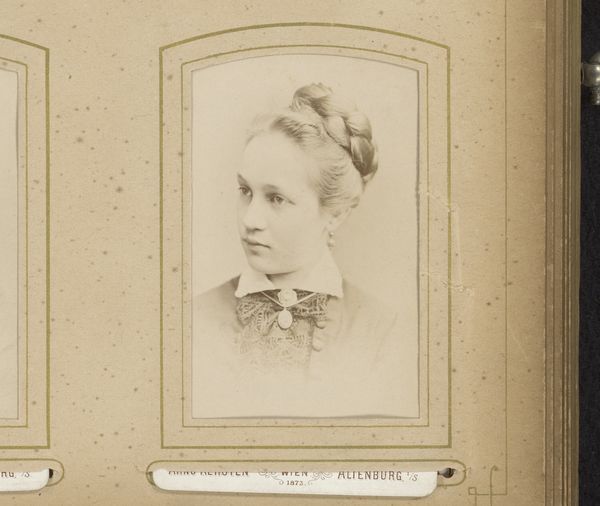
photography
#
portrait
#
charcoal drawing
#
photography
#
watercolor
Dimensions: height 83 mm, width 51 mm
Copyright: Rijks Museum: Open Domain
Editor: So, here we have a portrait, “Portret van een vrouw,” dating sometime between 1881 and 1904, made by Brainich & Leusink. It's presented almost like a watercolor photograph. It feels delicate, almost dreamlike in its soft focus and subdued tones. What stands out to you when you look at this piece? Curator: Initially, the interplay of geometric forms captures my attention. Note the contrast between the severe oval frame and the soft, diffused rendering of the figure within. It's a tension established between constraint and liberation that animates the whole work. Also, examine the precise tonality in the background, compared to the detail captured around the face. This choice guides the viewer’s eye, centering on the sitter's expression. What is your understanding of the artist's decision in using this sort of framing device? Editor: I think the oval frame lends a sense of classicism, something reminiscent of earlier portrait miniatures. But that tonal difference... I guess it flattens the space, focusing our attention right on her gaze? Curator: Precisely. And what of the pose, the arrangement of light and shadow across her features? Notice the almost classical triangular composition with the head as the apex and shoulders as the base, a structural underpinning providing balance and calm to the whole composition. Editor: It's become so much clearer how much of the portrait's effect is down to these carefully balanced artistic decisions rather than just the historical feel. Curator: Indeed. Formal qualities like line, shape, light, and composition are critical in decoding its aesthetic language and experiencing it anew. It really showcases how photography was taking ques from older painterly forms at the turn of the century.
Comments
No comments
Be the first to comment and join the conversation on the ultimate creative platform.
